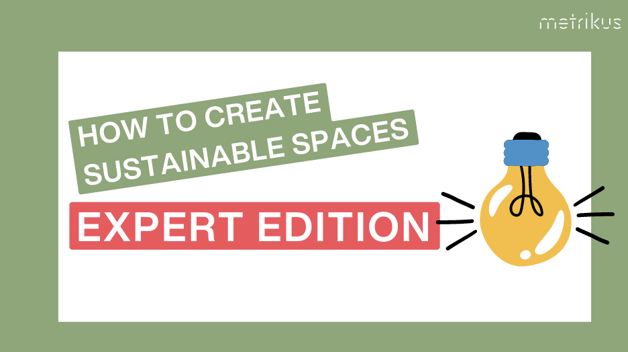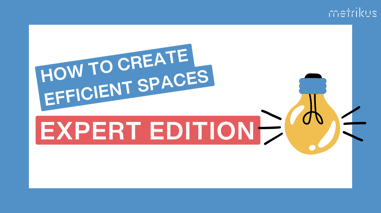How to create sustainable spaces | According to the experts
As the effects of the climate crisis become increasingly apparent, there’s never been a more important time to focus on decarbonizing our buildings.
There are lots of things to consider – from ESG regulations and compliance, to balancing indoor air quality and energy efficiency.
Read on to find out more about these topics from experts at Avanade, Accenture, and AirRated.
Contents
- Making sustainability in food retail easier to digest – Rasmus Hyltegard, Director of Advanced Analytics and Retail Industry & AI Capability Lead, and Azure CoE at Avanade
- A snapshot of tech for corporate ESG goals – Laura Fuentes-Dominguez, Senior Manager, Intelligent & Digital Workplace at Accenture
- Smart sustainability depends on digital – Miranda Hill, Innovation and Sustainability Lead at Avanade
- The sustainably healthy building paradox – Francesca Brady, CEO and co-founder at AirRated
Making sustainability in food retail easier to digest
Rasmus Hyltegard, Director of Advanced Analytics and Retail Industry & AI Capability Lead, and Azure CoE at Avanade

Food retail presents huge challenges in sustainable practice. Rasmus Hyltegard, joins Uwe Klatt, to share insights that deliver tangible results.
Perhaps like no other sector, retail is always evolving, changing, and in flux. Yet time and time again, we see retailers creating marvelous new experiences devised to attract, retain, and impress the elusive consumer. That ability to constantly deliver under intense and constantly shifting pressure is what sets retailers apart. Because let’s face it – tomorrow is a new day, and with each day in retail comes new expectations.
Sustainability in retail
Global retail is greatly affected by a breadth of sustainability challenges. Sustainable sourcing, supply chains, transport, storage, warehousing, packaging, waste, and energy consumption are just some of the aspects the industry needs to consider on its path to contribute to the 2015 Paris Agreement’s 1.5C target and reach ESG goals.
Crucially, retailers need to retain buyers’ and investors' confidence in their brand and demonstrate that they are a sustainable business. They balance demands for economic growth with economic care and social wellbeing by shifting operational savings into investments toward new experiences destined to make a lasting impact in consumers’ minds and lives.
Resiliency and sustainability go hand in hand: a recent Accenture study found that 81% of consumers plan to buy more environmentally friendly products over the next five years, and over a quarter of employees said they would be willing to take a pay cut to work for an organization committed to the environment.
So how can today’s technology assist? It all starts with measuring sustainability throughout operations with Sustainability Performance Indicators (SPIs).
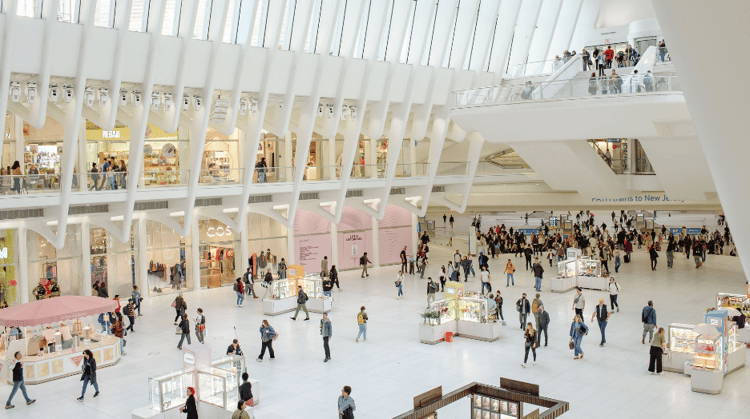
Meeting the unique challenges of sustainable food retail
Due to its complex refrigeration, transport, and storage requirements, food retail remains one of the sector’s prime focus areas when it comes to achieving higher sustainability goals. Tesco, the United Kingdom’s leading supermarket chain and retail giant with a 26.9% market share, accounts for a whopping 1% of the entire nation’s energy consumption. To combat this stark environmental impact, Tesco has committed to switching 100% of its energy supply to renewable sources – an admirable approach that we expect others to follow. In taking the same longer view of problem-solving now for the future, there are systems that can be delivered in the here and now that can augment existing technology for better performance. There’s also technology that provides insights around waste to help you drastically lower energy consumption.
Start by reducing HVAC energy consumption
Much like other commercial buildings, heating, ventilation, and air conditioning (HVAC) systems in supermarkets are controlled by complex Building Management Systems (BMS). BMS systems offer access to crucial data in terms of power metering, as well as the operation of hard building assets such as fans, and heating and cooling units. At the same time, they often exist as isolated, monolithic, decentralized units without providing access to analytics functions to monitor, supervise or correct their operation.
SPIs to improve the situation include store ambient temperature versus footfall and HVAC total power consumption versus store square footage; things that are hard to monitor by people. IoT sensors, on the other hand, are inexpensive, readily available, and can start measuring these SPIs in a supermarket branch in one day.
The key to success is connecting these IoT sensors, as well as the existing BMS infrastructure, to the Cloud and analyzing the data to provide actionable outcomes that lead to the reduction of overall energy consumption.
Food waste, food safety compliance, and refrigeration efficiency
While HVAC performance plays a major role in food retail sustainability in any given outlet, goods refrigeration turns out to be a critical factor in the overall sustainability of the sector. Refrigeration systems often leak because pressures in the system are usually higher than in the atmosphere, and it’s believed that between 10 and 30 % of the refrigerant charge in large systems is released each year, contributing to global warming.
Around 1.4 billion tons of food is wasted in the US annually, which is 30-40% of the entire US food supply – and the majority ends up in landfills. Across the water in Ireland, the Environmental Protection Agency (EPA) estimates that 60,900 tons of food waste was generated by the national retail sector in 2020. However, there are ways to better address food spoilage and leaky systems.
In an industry tightly regulated by food safety compliance including EN12830 and HACCP, refrigerators, chillers, and freezers are most often monitored by temperature loggers. These devices record temperatures in typical five-minute intervals and are situated next to food items in refrigeration containers. Typically accessed only for inspection by Public Health Authorities, they do not alert store managers to problems, nor do they notify staff on tasks to follow food safety regulations – such as the manual inspection of refrigeration units thrice daily.
In contrast, modern IoT technology offers sensors that not only do the loggers’ job, but also record and transmit live data in one-minute, five-minute, or 15-minute intervals. The result is a system that not only complies with food safety regulations but alerts store managers immediately if a refrigerator’s temperature strays from its optimal zone.
The ROI In IoT
As the grocery retail sector is estimated to account for 2% of the electricity used globally, IoT solutions have been proven to account for a 40% reduction in food loss through temperature monitoring and a 30% of total net energy savings via peak load optimization and reducing overall consumption.
Retailers can today meet sustainability targets while unlocking cost efficiencies – all while powering new experiences that meet the consumer expectations of tomorrow. Matching the right technology choices with each specific use case allows for accelerated time-to-value in a manner that grants rapid exploration and experimentation – all with a clear focus on ROI.
Resiliency, sustainability, and efficiency are necessary parts of delivering the retail experiences that customers want. Software plays a key role in unlocking data to generate rules, trigger actions, and aggregate insights that match operational KPIs and objectives. Global system integrators like Avanade bring the unique ability to combine strategy, innovation, and flexibility alongside industry expertise and deep Microsoft technical excellence, to empower retailers to do what matters.
Because in the end, you don't need to prove the technology. You need to find real problems and prove that fixing them will lead to an ROI. And that’s something that we’ve worked hard to produce.
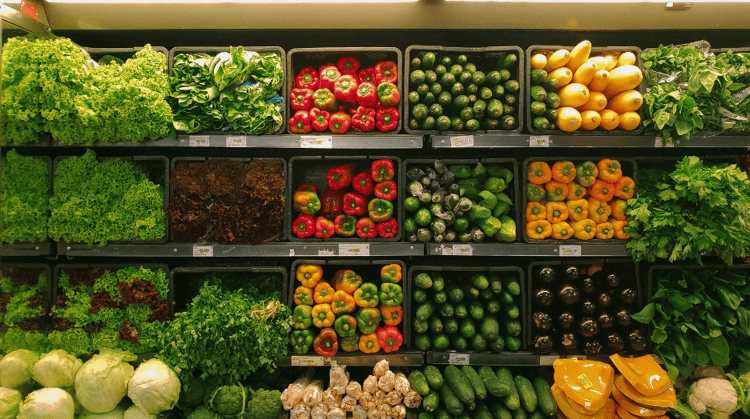
A snapshot of tech for corporate ESG goals
Laura Fuentes-Dominguez, Senior Manager, Intelligent & Digital Workplace at Accenture

Laura Fuentes-Dominguez summarizes tech-enabled workplaces for effective ESG reporting to start a journey of continuous improvement towards sustainability.
ESG is on the agenda of most major corporate boards and many view technology as a tool to report and measure progress. This is especially true when considering sustainability, where technology can enable companies to achieve their goals, often diving into fields that have been overlooked in the past.
Corporate Real Estate is, for many organizations, an area with untapped potential for improvement. From design and construction to ongoing operations of new and existing facilities, technology can empower organizations and accelerate progress to reach ESG goals in many ways.
- Technology can provide insights to improve operational efficiency. For instance, we can find opportunities to adjust lighting and HVAC operations schedules based on data like typical building occupancy or outside temperatures.
- Technology can automate tasks and adapt in real-time. Smart buildings can reduce energy consumption by lowering utilities usage. As an example, you can leverage automated window shades to optimize natural light in winter and minimize solar gain in summer.
- Technology can identify trends and model the future. Machine learning can identify correlations between often disparate events. This results in data-driven decisions that are constantly evolving, like optimizing when to start cooling or heating spaces based on employees’ arrival and departure times.
- Technology can measure our footprint. Using sensors and smart components, workplaces can quantify outcomes such as disposal of landfill waste vs. recycling, reduction of water bottles with the use of water fountains, and—perhaps one of the most critical factors of our carbon footprint — how, when, and where power is consumed.
- Technology can inspire and accelerate our success through accountability. It’s critical that organizations see tangible progress towards sustainability goals and make everyone part of the journey. Technology can help get people involved – transparently sharing data with employees on how their specific sites perform and showing them how their seemingly small decisions are making a difference as they become part of a collective effort for change.
The best approach is to help clients design their future workspaces, taking these points into consideration. Intelligent workplaces not only enhance the employee experience in the physical workplace but can start a journey of continuous improvement towards sustainability.
Smart sustainability depends on digital
Miranda Hill, Innovation and Sustainability Lead at Avanade
.png?width=200&height=200&name=Miranda%20Hill%20(1).png)
As Innovation and Sustainability Lead at Avanade, Miranda Hill knows how to activate sustainability through digital. Here's her practical sustainability framework that works across any organization.
Let’s face it, in a time of a recession, it’s difficult for companies to prioritize sustainability as a stand-alone priority initiative that gets the investment that it deserves – no matter how forward-looking company leaders deem its importance. A recent Avanade and Quartz study found that 93% of companies are still struggling to be sustainable. As a result, sustainability ambitions are just that – ambitions – stated prominently on annual reports and in CEO letters to the board.
Understanding and navigating the blockers can be straightforward with the right blueprint, so let’s dive into some strategies to get the ball rolling.
The importance of short-burst innovation cycles
The usual pattern is to make bold statements… but then what? Too often, that’s followed by slow progress and action. Especially because sustainability ambitions are often articulated as a bold moonshot, making it hard to break them down into parts and consider the next best action to take. That’s why it’s good for companies to consider sustainability through the lens of what can be done in the short, medium, and long terms and to compartmentalize investments into bite-sized experiments that help them make progress in achievable steps.
Knowing where you are on the sustainability maturity curve
As a starting point, companies must be realistic with their level of maturity on sustainability work; are they at a point where they are just starting to report on sustainability? Or are they already doing the reporting, but need to take more aggressive steps to lower GHG emissions in operations, or in the supply chain? Wherever companies are on the spectrum, digital can play a role.
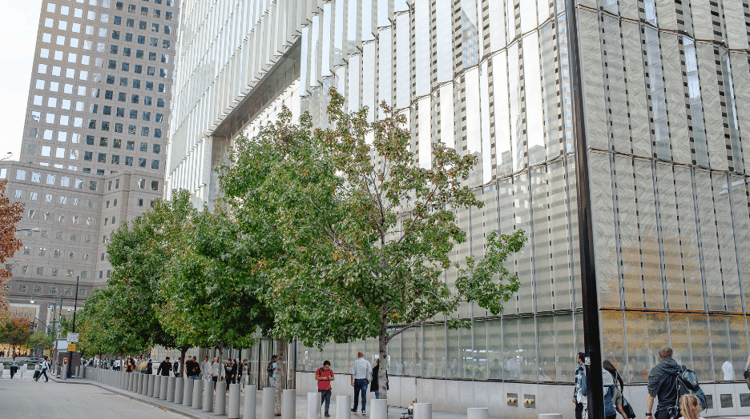
Breaking it down into parts
How do you map sustainability ambitions to real results? Consider some of these questions:
- How can I report more efficiently on my company’s GHG footprint and help with its emissions reduction progress?
- What tools and techniques are available to measure the impact of my IT assets and offset their carbon emissions?
- How can I monitor and lower GHG emissions so that my company can meet regulatory standards?
- How can I reduce the cost to operate across my physical footprint?
If you break down what needs to be done to address these questions, you realize it comes down to:
- Streamlining recording and reporting requirements
- Baselining and continuously monitoring carbon intensity in your IT estate
- Helping to provide the insights and capabilities to take real action that increases transparency, lowers risk, and increases operational efficiency
In all of these scenarios, digital can help.
Here are three propositions that help you to drive tangible results on all three fronts.
.png?width=1920&height=600&name=Job%20to%20be%20done%20(1).png) A practical call to action
A practical call to action
If there’s one primary call to action here, it’s to be practical about sustainability actions, folding them into your digital transformation – a sustainability hack, of sorts. What do we mean by that? Turn your cloud modernization project into an energy optimization opportunity. In doing so, you will impact your carbon intensity across your tech estate. Leverage predictive maintenance capabilities to detect pipeline leaks in the field to increase workplace (and community) safety and avoid PR headaches. Monitor the environment and calibrate environmental systems based on capacity to optimize energy use, and you’ll lower your carbon footprint – you get the picture.
Whether you are just at the beginning, or further along in your journey, there’s more you can do to take sustainability action and drive results that hit your bottom line: cost savings, energy reduction, service optimization, risk mitigation, and more. If you challenge yourself to mine sustainability benefits from the work you are already committed to doing, you can drive toward your longer-term goals through transformational ‘nudges’ that provide proof of value in the near term. In doing so, sustainability is part of a longer-term process, not an endpoint.
The sustainably healthy building paradox
Francesca Brady, CEO and co-founder at AirRated

Francesca is CEO and co-founder at AirRated; the global benchmark for indoor air quality. Since formally launching at the start of 2020, the AirRated portfolio has over 10 M sq.ft. of Real Estate in the UK and continental Europe. Francesca is dedicated to promoting and educating audiences from the property industry about the importance, benefits and management of good indoor air quality. In 2021 she was honored on the Forbes 30 under 30 list for her work with AirRated.
There’s no denying that our commercial spaces need to be more sustainable, but at what cost? Awareness of the ongoing climate crisis and its impact on our day to day lives is increasingly tangible as we see bills rise, and social disruption and increasing political pressure being mounted on governments and decision makers.
Whilst this is high on the agenda within CRE, as it should be, one of the big challenges is how we balance sustainability with other important aspects of our commercial spaces such as efficiency and productivity as well as health and wellbeing.
AirRated’s most recent survey of employees and CRE decision makers in the UK and US found that 73% had an increased awareness of indoor air quality (IAQ) from 2021 to 2022 (a rise of 20% on the previous year), with 80% expressing an understanding of IAQ’s impact on their health and 68% saying that a lack of transparency about how healthy a company’s office would influence their decision to work there.
So where do we go from here? It’s clear there’s demand from both sides of the fence to solve the conflict, but what’s been halting progress?
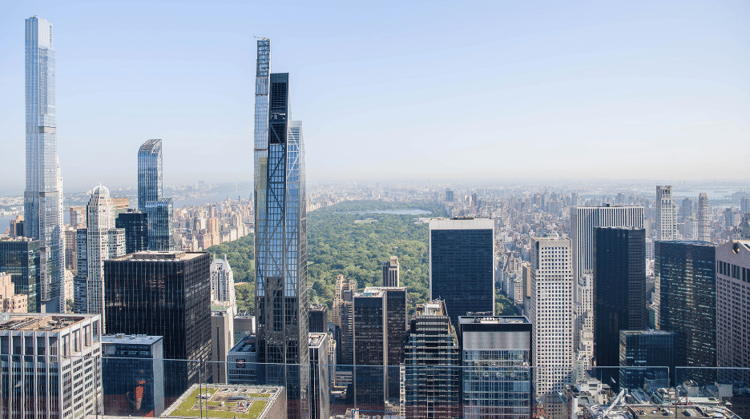
How have we got here?
Over recent years regulation and commercial focus has predominantly been around sustainability and the push towards net zero. The outcome of this is that we’ve looked to develop or retrofit buildings to make them more sustainable, which isn’t a bad thing at all, but has led to regulations and mandatory requirements to be put in place that can inadvertently, negatively impact the health of buildings.
A good parallel example to relate to is around car emissions. There was a big push to move from petrol to diesel cars due to the impact petrol emissions had on our environment, however diesel cars produce NOx gasses, which are particularly harmful to humans. Even though our intentions can be to protect the planet, this can sometimes come at a cost to human health and vice versa.
But why does this happen? Well, there can be an argument towards the fact that we prioritize dealing with issues that we perceive to be directly impacting us in the physical sense. We’ve seen this with climate change over the recent past where maybe we were less aware of the impacts our behavior had on our environment and didn’t notice the subtle indirect consequences over time until we saw big events that either caused disruption to us directly or became almost impossible to ignore. For example rising temperatures, flooding, forest fires and other incidents that have made mainstream media.
In response to this there has been a much bigger emphasis on sustainability within CRE. The property sector creates approximately one-third of global greenhouse gas emissions, and 40% of global energy consumption and in order to meet the commitments made in the Paris Climate Agreement. The global average building energy intensity per unit of floor area needs to be at least 30% lower in 2030 than its current level (source: UNEP Finance Initiative’s Global ESG Real Estate Investment Survey Results, 2019).
To make headway against these targets there has been an introduction of stricter regulations when it comes to building sustainability within CRE. One recent example is the upcoming requirements around EPC ratings. From April 1 2023, both new and existing commercial lettings must have a minimum EPC rating of E, with landlords not able to continue with an existing tenancy under that rating. This increases to C from 2027 and B from 2030 with substantial fines issued to those that don’t meet requirements. These regulations aren’t necessarily helping make our buildings healthier though and can lead to more airtight buildings and unhealthy characteristics within our indoor environments, especially if the building’s design and specification was more focussed on ensuring sustainability over IAQ for example.
We’re starting to see increased awareness and focus when it comes to air quality and healthy spaces though in the aftermath of the COVID-19 pandemic, as the impacts of air quality and healthy buildings become more apparent in our day to day lives. Initiatives such as The Future Building standard, which includes the new Part F regulations and requirements to undertake continuous CO2 monitoring within certain buildings are all recent examples of regulatory changes aimed at making our buildings healthier.
The rise of healthy buildings
It’s clear that healthy buildings are starting to become a higher priority for Real Estate investors as well as occupiers. The Global Wellness Institute estimates that the number of buildings worldwide which have earned wellness building certifications has grown over 1,000% over the past year, maintaining a 200% yearly growth over that period. This coincides with 92% of Real Estate investors expecting demand for healthy buildings to grow over the next three years.
The demand from the top isn’t unjustified either. 87% of investors stated that tenants from the office sector are driving demand for health buildings and will pay premiums of 4.4-7% to secure a “healthy building”. With the Lawrence Berkeley National Laboratory estimating that improving air quality can add up to $20 billion annually to the US economy, that doesn’t seem like a bad trade-off either.
The message is that we can’t continue to bury our heads in the sand when it comes to healthy buildings – there’s demand and it’s only going to grow in importance over time. But it’s also clear that effective buildings have to balance both being healthy and sustainable and it shouldn’t be an “either-or” conversation.
MIT’s School of Architecture and Planning reported that lighting, thermal comfort and air quality were the top three features of a healthy building prioritized by stakeholders, yet despite the reported benefits of meeting these demands, building owners still struggled implementing health buildings due to budget, prioritization of energy performance, unclear business cases and a lack of expertise. These types of challenges need to be addressed if we’re to strike the right balance.

How can health and sustainability live in harmony?
Going forwards, we need to focus on creating spaces that are healthier for us and better for the planet – doing so is absolutely key in order to build a more resilient future for us all.
The quality of a building’s indoor environment can significantly impact our physical and mental health, wellbeing and productivity. There are multiple factors that contribute to making indoor spaces healthy, and it is essential to consider the entire life-cycle of a building – from design and construction, to operation and maintenance.
Whilst it’s easier to tackle this issue when considered from the design stage, 80% of office buildings which exist today will still be in-use in 2050 so how can we optimize our existing buildings?
Understand your building’s current performance
Whilst it may seem a daunting task to make our spaces healthier, understanding how your buildings are currently performing is really important to establishing a pathway to creating healthier, more effective indoor environments.
By collecting real time data on your indoor environment, for example with IAQ sensors, and your building operations via a building management system (BMS), you can start to better understand how your building is performing and the relationship between sustainability and health. This allows you to identify areas of strength or weakness across your space as well as helping you start to test and optimize your specification to find the right balance between the two.
Set suitable targets
It can be helpful to set some thresholds to aim for in creating a healthy space – your buildings don’t have to be performing perfectly to be considered healthy. If you understand how the different parameters of air quality impact health, you can make more considered decisions as to how best mitigate those risks whilst remaining sustainable too. If you’re not sure what to aim for, this is where getting some support from experts or certification bodies can be really useful.
Test and experiment
To achieve sustainability in healthy buildings it’s all about working out how much energy you're using and the performance of your internal environment right now. It’s then working out your ideals and establishing how you get there. We see a lot of occupiers leaning on property managers and facilities managers to say, “This is what we're working with right now. If we wanted to make our space more sustainable, how would we go about doing that?”. Then if you were to make changes, you could monitor what the internal environment was looking like, what the energy consumption was looking like and identify what works and doesn’t.
It will be different for different spaces based on lots of different factors, but sometimes even simple changes such as switching out cleaning products, leaving meeting room doors open in between use, using low-VOC materials and even optimizing your ventilation systems to be used in line with demand can contribute to making your spaces healthier without compromising on sustainability.
In summary
Ultimately, creating sustainable and healthy buildings is possible and it needs to become the norm. Both health and sustainability have huge importance within CRE and will play a big part in future buildings as the demand for better buildings increases not just from investors but from our people and planet too.
Want to get more content like this? Check out ‘The Measure – Sizing Up PropTech, Commercial Real Estate and the Modern Workplace’, where these articles were originally printed.

